The Cold and Encroaching Doom of Death in Space
Player and gamemasters (GMs) of tabletop roleplaying games often refer to “crunch.” This is in reference to how the mechanics of the game work, and generally (though I suspect some folks will fight me on this), a crunchier game has more context-based rules. For example, the least crunchiest game is someone roles a 20-sided die and no matter what, if it rolls above 10, it is always a success. You start adding crunch to it when the rules start to say, “okay, not modify that roll by +2 for attempting to break a grapple or -1 if doing the task in the dark.” Games can get crunchy in a whole lot of ways (lots of rules for various situations–looking at you Starfinder). Some go way crunchy (an example of an extreme crunchy game is Dystopia 23, see my article here).
In the early 2000s, games tended to get more complex and crunchier and a “movement” referred to as the OSR, or old-school revival (sometimes old-school renaissance), crept into the tabletop gaming community. Originally hearkening back to the supposed simpler days of tabletop RPGs in the early 70s (okay, the early days of Dungeons & Dragons), the movement’s core can best be summed up in “rulings over rules.”
This over simplifies the OSR scene, but that’s the general idea. The notion is that instead of writing a bunch of rules to cover scenarios, you keep the crunch to a minimum (not zero, but very light) and let the GM decide what makes sense in the moment. GMs have to make on-the-spot rules all the time, even with crunchy games because players are notorious about coming up with ideas that the rules do not cover. So…why not make that the core philosophy.
The OSR movement has spawned a lot of D&D retroclones, but in recent years, rather than trying to emulate the D&D of yesteryear, OSR has inspired rules-light gaming. Not many of these games have been science-fiction based. Mothership is one (see my article here), which just surpassed a $1,000,000 Kickstarter for a boxed set of the game with revised rules. An earlier Kickstarter in 2021 was for Death in Space (by Christian Plogfors and Carl Niblaeus). From the same group as Mörk Borg, Death in Space attempts to capture much of the same doom-metal, rage-punk tones as Mörk Borg.
Death in Space is a full-fledged scifi game. Set in a universe where the Big Crunch (one theory about the life cycle of the universe is that eventually, it will stop expanding and work its way back to a Big Crunch instead of a Big Bang) is happening (though disputed) and after a decades long conflagration known as the Gem War. As the universe is collapsing back onto itself, a rumored presence seems to be coming from the very edges of the universe.
Heralding the collapse is the void, a strange presence that infects and corrupts.
The titular gems of the Gem War were a necessary material for interstellar travel, powering the bridger spacecraft. Found only on Inauro, a moon in the Tenebris system, the gems are now mined out completely. Advanced technology and the construction of spaceships has stopped. The war ruined everything. With interstellar travel becoming increasingly rare, once united star systems are not isolated. Even within systems, the travel times have extended and unifying rule has disintegrated.
The default star system the players are in is the Tenebris system. Home to a number of planets, moons, asteroids, semi-derelict space stations and spacecraft, the players work to survive by taking on jobs that allow them to repair ships or stations, get food, and increase their reputation, the only currency that really matters. The system is incredibly rich and detailed while relying on few words to get that detail across.
The descriptions include more than natural phenomenon. Rimtursar 581 is a ship graveyard. The Iron Ring is a series of stations and ships connected and in orbit above Inauro. Some parts of the ring are derelict and dark. Others congested and full of life and trade. The system offers plenty of opportunity for adventure. Among the many tables for randomly generating encounters and salvage items, a set of the, exist for generating contracts, one of the primary adventuring activities. Perhaps the players will be asked to evacuate and AI from a rogue planet for spare parts.
One of the hallmarks of Mörk Borg is its use of tables to generate items, encounters, and much else. Death in Space continues that tradition. Dozens of tables exist to make the GM’s life easier and introduce random results. Tables for creatures. Watch out for the Nadi Snake: “Gets inside the body of its victim and consumes it from the inside. To get rid of the snake, snatch it when it is moving between body parts. Or cut off the limb.”
Tables for corruption caused by the Void. If you’re a Chrome (i.e., android), you better hope to not encounter the Transmutation Cube: “A mutated Anarchy program, distorted into physical form. Devours mechanical parts and loves the smell of code. Prefers attacking chromes.”
Tables for creating traps. Space encounters. Locations in the Iron Ring. Addictive substances. NPCs and NPC ships.
Characters in Death in Space are defined by four attributes: Body, Dexterity, Savvy, and Tech. They range from -3 to +3. Players can choose from six origins: Carbon, Chrome, Void, Velocity-Cursed, Punk, and Solpod. Each one has two special abilities that go along with it. Carbons are the basic version of humanity. Chromes are cyborgs with AI brains. Punks are the rogues. Solpods are folks who hibernate for decades and wake up occasionally to study “slow, cosmic phenomena.” I love the description for Velocity Cursed:
Ill-fated ones that have started to lose their connection to reality. They shift and flicker in and out of spacetime with glitching faces.
Their two abilities are Future Memory and Pocket Worlds. Future Memory allows them, once per session, to ask the GM for directions because they’ve been there before. Pocket Memory is a portable computer that they can use to store their memories. This allows them to connect the dots between the past and present.
Void characters are described as shamans that hide their faces. They’ve encountered the edge of the universe via visions.
Players then determine details about their background, traits, drives, and looks. These are generally more flavor oriented. Backgrounds include things like Isotope coder, bounty hunter, and monolith cultist. Traits includes polite, dishonest, remorseful, lazy, and inventive. Drives — which are the things that get the characters up every morning to face the relentless deep dark of space — include friends, technology, secrets, and to find purpose.
Looks give such delightful results as patches with the words, “I love plants,” “too clean civilian clothes,” bullet scars, and robotic hands. Past allegiances provide context for your character. Did they support the winning or losing side of the Gem War? Or are you holding on to an idea?
Every character has a Defense Rating of 12, though Armor adds to this, and have 1d8 hit points. To get some idea of the lethality of the game, pistols cause 1d6 of damage and shotguns cause 2d4. Yeah, characters can go down quickly in this game. That’s one reason why creating characters quickly is a virtue.
They also get a trinket. Purely flavor text, they are nonetheless helpful in fleshing out the character—and help understand the setting (both Death in Space and Mörk Borg are excellent in having the tables of information not only add to the individual character’s context in the world but also what the setting and tone of the game are. It says a lot about a character and a setting when you get results like, “A bag of metal pieces called coins” or “Cartridge with AI from a dead pet.”
After creating the character, the players then create their hub. This is either a spacecraft or station that they find themselves in possession of. Hubs consist of modules: life support, command center, and so on. The hub also has a power source that provides only so much power to run these various modules. The game does not go for intense realism in this case. It’s not about hard science fiction. Instead, it’s about getting a hub created quickly with easy rules so that the players can get playing the game.
Hubs have backgrounds and a table with a list of them: Did it arrive empty except for the dead crew and strange symbols etched on the hull? Does it have DNA-locked box that contains all the logs and has not been opened? Or part of a time travel experiment. Again, tons of flavor about the setting in the background results.
The rules are quite simple: The player states what they want their character to do. The GM indicates which attribute is the relevant one. The player rolls a 20-sided die (D20), adds the value of the attribute to the roll (so results are -3 to 23), and if the result is higher than 12, the character succeeds. If they don’t, the player fails the task or something goes wrong or becomes more difficult and they get one void point.
If a check is opposed (that is, someone or thing is directly opposing the task), then both the player and the GM roll the D20 and add their relevant ability modifier. Highest result wins. Tie the person initiating the action being opposed wins.
If the GM determines that the task is subject to some advantage or disadvantage, the player rolls two D20s, adds their relevant ability modifier, and takes the higher or lower result, respectively.
Void points (players can never have more than four at one time) can be spent to gain an advantage on a roll or activate a cosmic mutation. Mutations include telepathy (inject a single word or feeling into someone’s mind) to Magnetic (blisters forming on the hands and feet that let you climb metal walls) to Feedback Loop (jump back in time 10 seconds but lose one important memory).
If a void point is spent and the roll fails, the player rolls 1D6. If the result is less than the number of void points they currently have, well, they get a void corruption. These are lovely things like “when you try to sleep, you see through someone else’s eyes,” a third eye popping forth from your body, and weird mathematical symbols start appearing on your body.
Attack rolls are a tad different. Instead of the static 12 to succeed, players roll against the opponent’s Defense Rating. And vice versa. When being attacked, the player’s Defense Rating determines the level for success.
Given that the players acquire a station or ship that are, well, old and have issues and likely need to be repaired, the game does include crafting and repairing instructions. Space travel is also covered, and it can take a lot of time to go from one place to another depending on the power source for the spaceship. Spaceship combat is a bit more complex, but still the most rules-light this GM has seen. The rolls are essentially the same, but the complexity arises in distances and fleeing. Distances, instead of being measured in kilometers are descriptive range bands: Detection, Identification, Firing, Boarding. Ships can move from one to two of those steps. Two steps is called a risky maneuver and requires a roll. Failing the roll, eats up extra fuel.
Overall, Death in Space is a fantastic rules-light science fiction RPG. It adheres to the OSR’s key theme of rulings over rules and seeks to get out of the way of the players and GM to focus on story and immersion. Like Mörk Borg, it packs a ton of setting and flavor detail into the tables and brief descriptions. The design of the book is far less gonzo that Mörk Borg (seriously, if you’ve not checked that game out, it’s worth it) but is thematically appropriate. Stark with a bit of retrofuturism and weirdly clean. It’s in tune with the setting.
Death in Space just released this PDF for its Kickstarter backers, and the book should be hitting public sale in the not too distant future. You’ll be able to get it at Free League Publishing’s site when it’s available. (Free League Publishing serves as the publisher like they did for Mörk Borg.)
Seriously, if you’re a science fiction RPG fan, you’ll want this on your shelves and playing at the table.
Patrick Kanouse encountered Traveller and Star Frontiers in the early 1980s, which he then subjected his brother to many games of. Outside of RPGs, he is a fiction writer, avid tabletop roleplaying game master, and new convert to war gaming. His last post for Black Gate was Back to Where It All Began: Twilight: 2000’s Return to Europe Campaign. You can follow him and his brother at Two Brothers Gaming as they play any number of RPGs. Twitter: @twobrothersgam8. Facebook: Two Brothers Gaming.
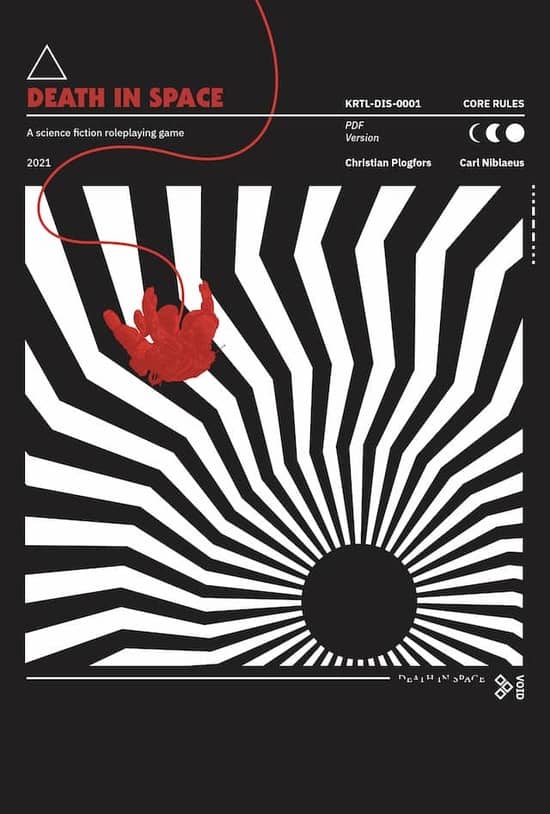
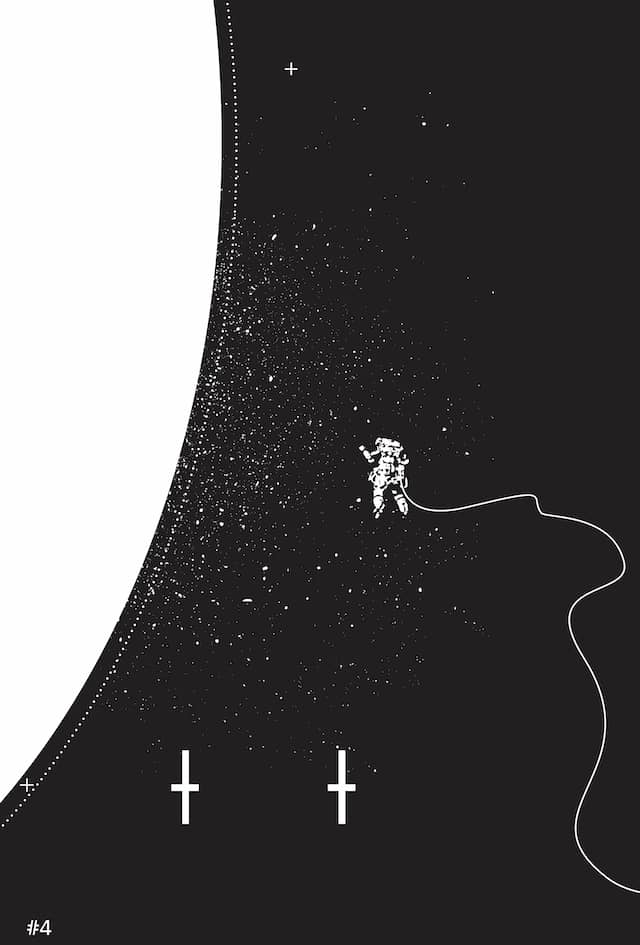
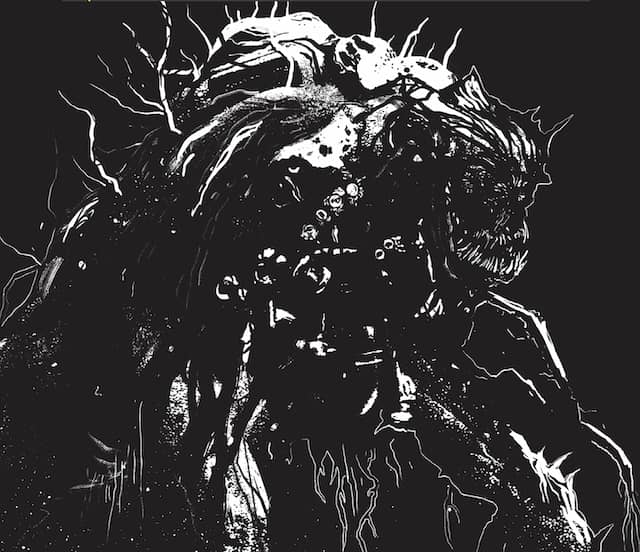
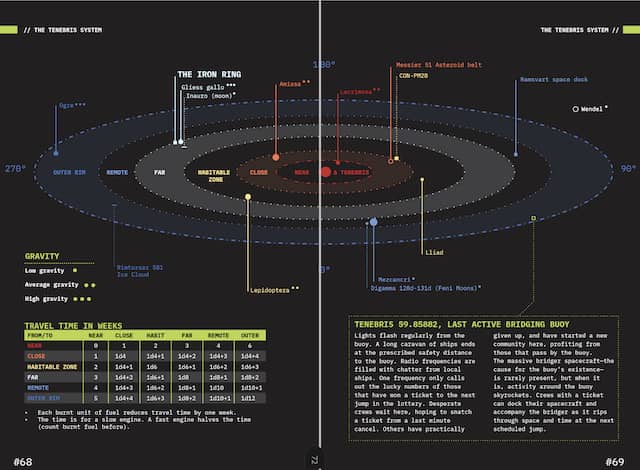
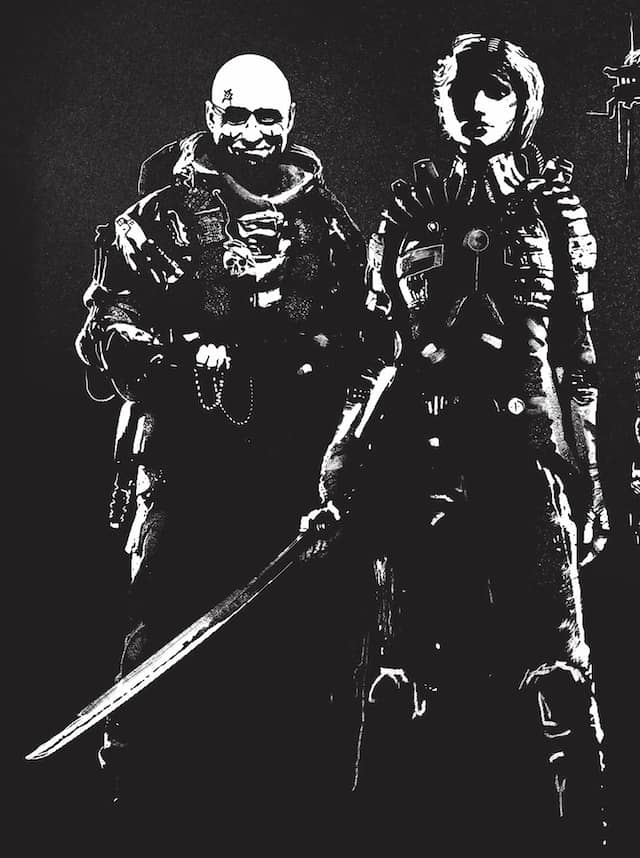
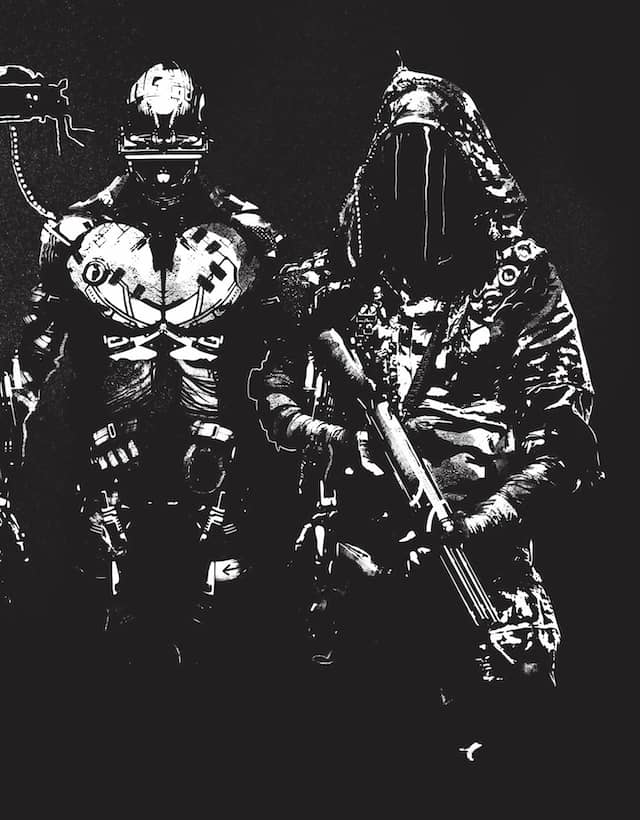
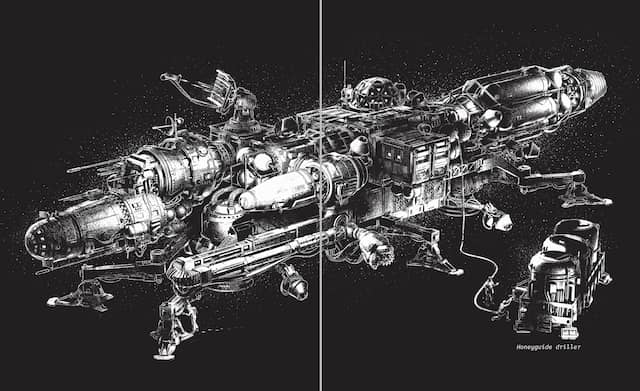
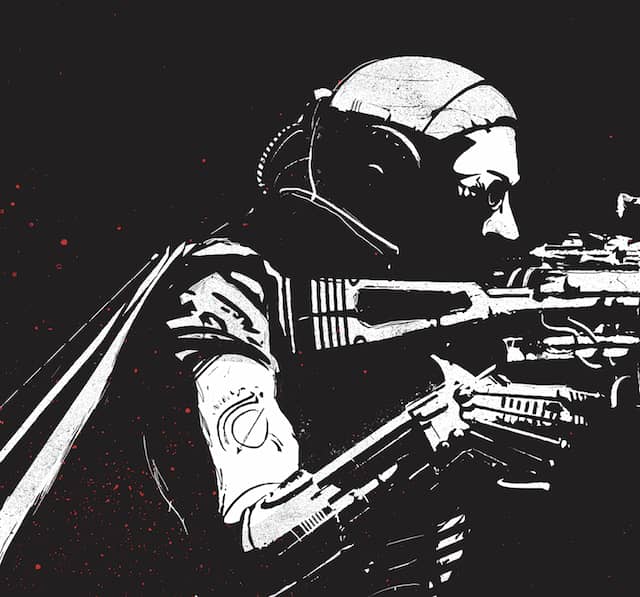
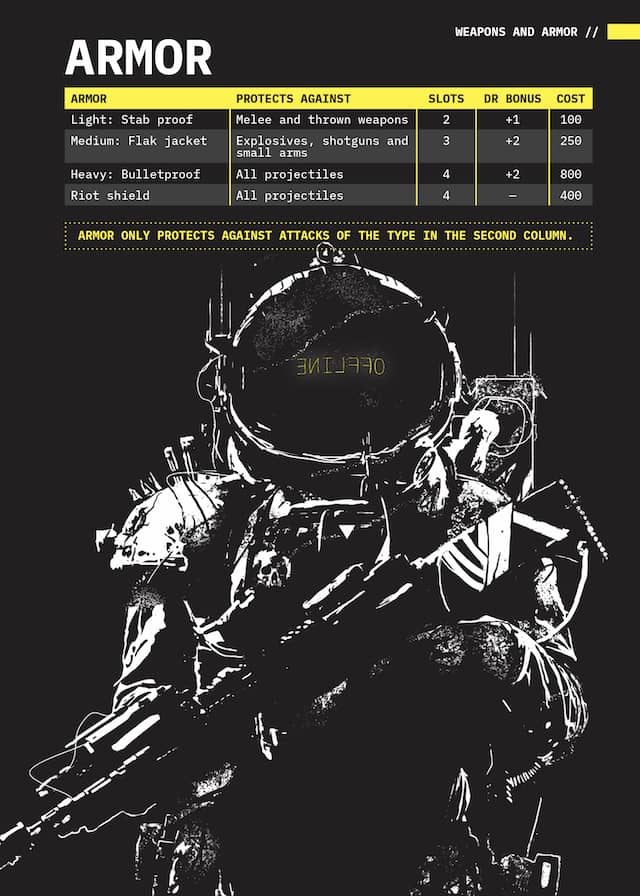
I like rules-light games, but then again, I am principally a referee, so memorizing way many “stunts” and charts and stuff is not always my idea of fun. I am not sure that I am OSR material, having drifted into “indie” territory long ago with FUDGE. But I will keep an eye open for “Death in Space” at my FLGS, just in case the sf bug bites.
One of the things I like about rules-light games is that they tend to fall in with my own tendency to just rule on the situation. I do think that, sometimes, players get “trapped” by too many rules. They seek to follow the rules rather and that limits their imagination. Conversely, rules-light games can “free” them. Not absolute of course….
An excellent point about the ease of play in rules-light gaming! One of my biggest complaints with D&D 3.5/Pathfinder was creating characters who were equal to others by the stats but were much less effective in play until I discovered the “proper” combination of feats/stunts/adds to boost their actions. Which made knowing the rules more important than playing the game, alas.